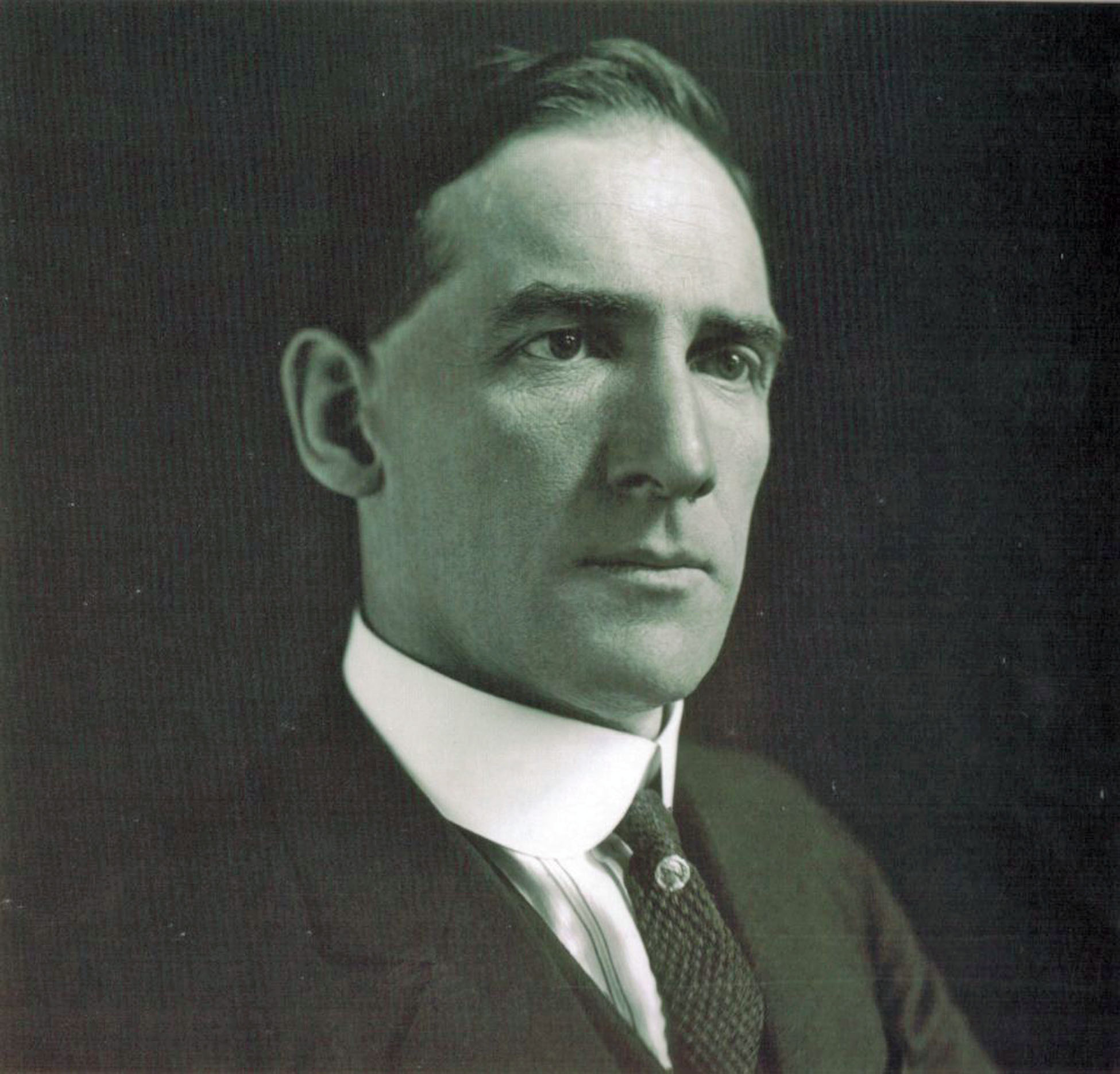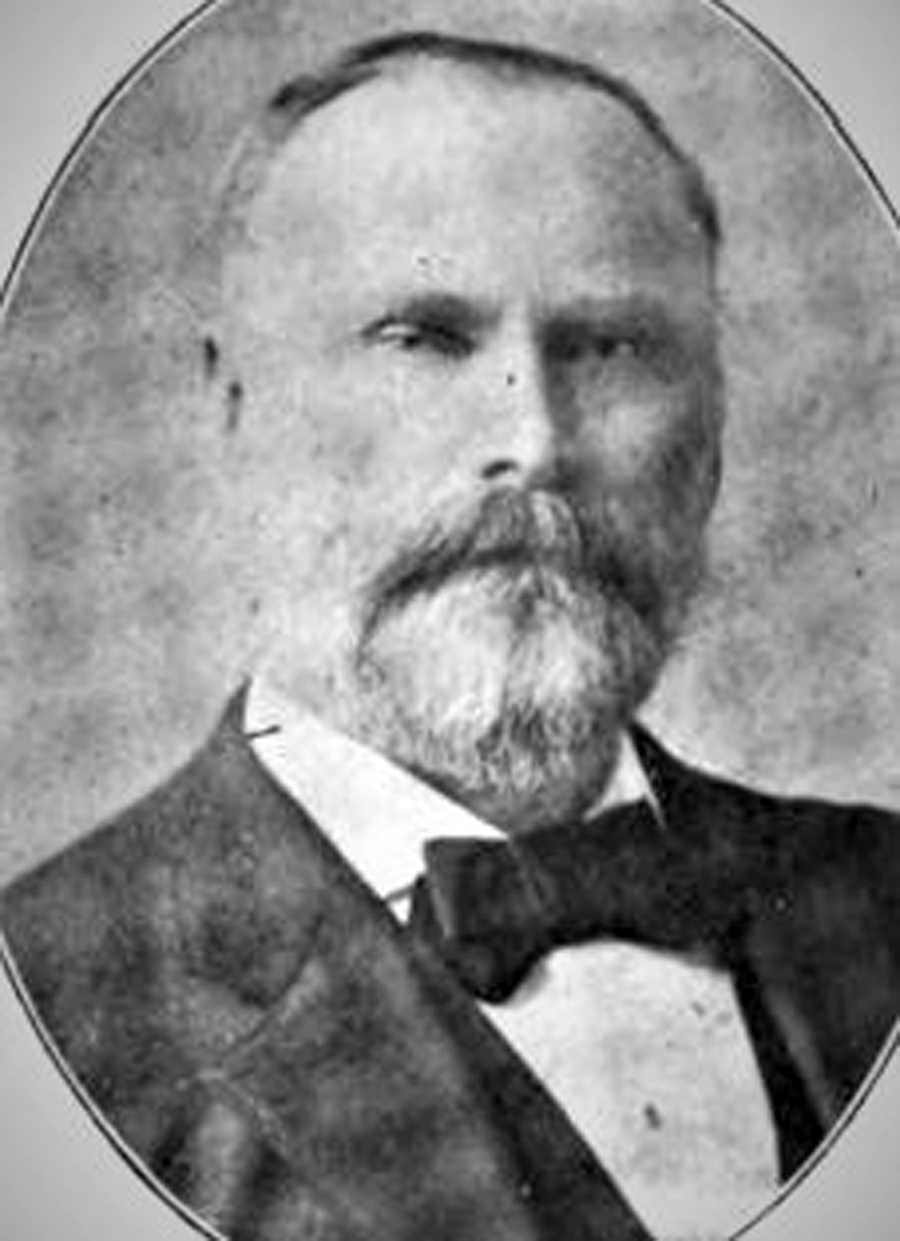Mining and Minerals Education Foundation |
Frederick Gardner Cottrell (1877 – 1948) Inventor and Philanthropist 2021 Inductee from Mining’s Past Frederick Gardner Cottrell was born on January 10, 1877, in Oakland, California. After finishing high school, he entered the University of California, Berkeley at age 16 and graduated in 3 years. Cottrell then enrolled at Harvard but soon left to pursue graduate work in Germany where he received an advanced degree from the University of Berlin in 1901 and a Ph.D. from the University of Leipzig in 1902. Returning to a professorship at the University of California, he married Jessie Mae Fulton, a former high-school classmate, in 1904. While at Berkley he embarked on his best-known work which culminated in 1908 patent for the Cottrell electrostatic precipitator for smelters, one of the first inventions designed to eliminate air pollution. The Cottrell process used a system of electrodes or pipes energized by a high-voltage electrical source to collect (or precipitate) dust and particles from the smoke and gases resulting from the smelting of ores. The process also recovered valuable metals from smelter dust and is still widely used throughout the world. Cottrell established the philanthropic Research Corporation in 1912 where his patents funded scientific research. Cottrell later served as director of the U.S. Bureau of Mines and was instrumental in helium production during World War I. In 1921 he began work with the National Research Council, and the U.S. Department of Agriculture’s Fixed Nitrogen Laboratory. He was elected to the National Academy of Sciences in 1939. On November 16, 1948, Cottrell, died while attending a meeting of the National Academy of Sciences held at his alma mater, the University of California at Berkeley.
George H. Dern (1872 – 1936) Mining Man and American Politician 2021 Inductee from Mining’s Past George H. Dern was an American politician, mining innovator, and businessman. He is remembered today as the co-inventor of the Holt-Dern ore-roasting furnace, as a former governor of Utah (1925–1933), and as a former U.S. Secretary of War (1933–1936). Dern was born in Dodge County, Nebraska, on September 8, 1872. He graduated from Fremont Normal College (now Midland University) in 1888 at the age of 16 and later attended the University of Nebraska (1893–1894). In 1894, Dern moved to Salt Lake City, Utah joining the Mercur Gold Mining and Milling Company, where his father served as president. He married Charlotte "Lottie" Brown in 1899 and they had six children. Dern rose rapidly from bookkeeper to company treasurer and in 1901 he was promoted to general manager. Along with T. P. Holt, Dern designed the Holt-Dern roaster, a furnace for the Holt-Christenson roasting process, which was a technique for recovering silver from low-grade ores. After Mercur Gold Mining and Milling shut down in 1913, Dern went on to positions with mining companies in the Park City, Tintic, and Little Cottonwood mining districts of Utah. His experience and passion for mining would be reflected later in his political career. He served as the Governor of Utah for eight years, pushing to develop the state economy by using Utah's rich natural resources. During his tenure, a landmark mineral leasing act was passed that leased, rather than sold, Utah's mineral rights to private concerns. Dern died in 1936 from kidney and heart complications caused by influenza. His legacy includes descendants Bruce Dern and Laura Dern, both prominent actors.
Francis W. Maclennan (1876 – 1947) Underground Miner 2021 Inductee from Mining’s Past Francis William Maclennan was an internationally renowned mining engineer and former Vice President of the Miami Copper Company. He was born in Cornwall, Ontario, Canada in 1876 and graduated from McGill University in Montreal in 1898. He and his wife Alta had no children. He worked for various mining enterprises in British Columbia, Utah, Nevada and Peru. From 1919 to 1936 he worked for the Miami Copper Company in Arizona in management and as Vice President. By 1925 many financial experts were looking to the salvage value of Miami Copper Company. The mine had been very profitable, but the end of the high-grade ore body was in sight. There was however information from drilling and exploration work that had been conducted over the years. Using this data, Maclennan devised a mining method that would drastically reduce mining costs and extend mine life. At the time, block caving used blocks 60 to 100 feet in height. Maclennan designed a system using blocks 300 feet in height by utilizing detailed design, engineering and costing. Maclennan published a 44-page technical paper in 1930 detailing his caving methods through the American Institute of Mining, Metallurgical and Petroleum Engineers (AIME). He was a member of AIME, the Mining and Metallurgical Society of America (MMSA) and the Canadian Institute of Mining, Metallurgy and Petroleum (CIM). In 1931, Maclennan was awarded the William Laurence Saunders Gold Medal for “outstanding achievements in mining methods which create ore out of rock” as the originator of the high block caving method, which greatly extended the life of the Miami Copper mine. He died in 1947 after a long illness.
Robert B. Metcalfe (1825 – 1905) Explorer and Miner – Discover of Morenci Ore Bodies 2021 Inductee from Mining’s Past Robert Metcalfe was one of the discoverers of the Morenci copper deposits in Arizona. He was born in Kentucky and educated at West Point. In 1849 Metcalfe headed for the goldfields of California where he amassed a fortune from mining. More than a decade later he joined the Confederate Army. At the close of the Civil War, Metcalfe found his home destroyed, his wife gone, and his fortune lost. He then headed west looking for his wife and prospecting for a new future. In 1870 while Metcalfe was scouting the area near Silver City, New Mexico in pursuit of a band of Apaches who had raided local ranches, he discovered a rich copper deposit. He returned two years later with his brother Jim and located the Longfellow claim. Metcalfe was among the original group of prospectors who organized the Copper Mountain Mining District in 1872. The Metcalfes sold majority interest in the mine to the Lesinsky brothers but disagreements followed, so the Metcalfes sold them the remaining shares in the Longfellow Company. The Lesinskys further developed the Longfellow and in 1882, sold the mine to the Arizona Copper Company. The town of Metcalf along Chase Creek about 8 miles from present day Clifton was named after Robert Metcalfe. Established in 1875, it became an Arizona Copper Company owned town in 1882. The town was shut down shortly after Phelps Dodge acquired it in 1921 and was eventually overtaken by the advancement of the Morenci open pit mine. Metcalfe died in 1905 at the age of 80 in his home state of Kentucky. |




